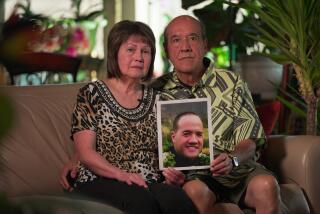PERSPECTIVE ON MENTAL ILLNESS : ‘Right’ to Madness: a Cruel Hoax : The anti-psychiatry movement that shut state hospitals created an inhumane world on our streets.
- Share via
In all the discussions of the impact of the 1960s counterculture, its most visible--and most devastating--legacy has gone unremarked: the untreated mentally ill abandoned to degradation in our public places.
Often itself seen as crazy, the counterculture came to idealize insanity. Leading countercultural figures like psychiatrist R.D. Laing saw schizophrenia as a natural LSD trip, a “voyage of discovery” leading to deeper perception. Said Laing: “We can no longer assume that such a voyage (schizophrenia) is an illness that has to be treated. . . . Can we not see that . . . it is itself a natural way of healing our own appalling state of alienation called normality? “ (italics in original).
For the politically minded New Left--for whom Laing became a guru--insanity became another stick with which to beat the Establishment. In this intellectual climate, the mentally ill became a segment of society needing liberation, like blacks, women and Third World peoples.
Sociologists gave this view of the mentally ill academic respectability. Who became a mental patient (and who remained free) was determined by accident: Those brought by their families or other authorities into the purview of official agencies of control for so-called mental illness were stigmatized and isolated, even though their behavior was no different from that of countless others.
What mental patients needed, it seemed, were lawyers, not doctors. Indeed, by the late 1960s a group of young public-interest attorneys had established an informal mental-patient liberation bar. They saw themselves on the frontier of the civil-rights movement, white hats riding to rescue the most overlooked of this country’s oppressed social groups.
The mental-patient liberation bar was not able to fulfill its goal of eliminating civil commitment and abolishing state hospitals. Its activities were, however, instrumental in slashing the size of the state hospital population by more than 80% nationwide. Aided by a receptive judiciary, it succeeded in almost all states in making “dangerousness” (to self or others) the sole criterion for commitment. And “dangerousness” was narrowly defined. As psychiatrist Steven Zavodnick puts it: “You’ve got to grab the patient between the time (he) fires the gun and the bullet hits the victim--and just hope he’s not a good shot.”
As for dangerousness to self, even manifest helplessness does not necessarily qualify a patient for treatment. The mentally ill person’s ability to survive on the streets--to find food in trash bins, a cardboard box to sleep in--proves that he is not “gravely disabled” under the law; the only way he can prove conclusively that he is gravely disabled is to die there.
Many commentators have noted the radical egalitarianism of the counterculture, its hostility to all hierarchies and distinctions. What has escaped notice is how denial of mental illness has dissolved the most fundamental distinction: that between sanity and madness. The most radical egalitarian claim was that all realities were equal. Madness became another expression of legitimate human autonomy, an alternative life-style.
Public authorities were paralyzed, powerless to intervene against human degradation. To exert authority and force crazy people, however needy, into treatment was, the public was told, an unconscionable repression of human rights. Yet, as community psychiatrist Richard Lamb argues, when illness threatens a person’s welfare, he or she has a right to treatment; if the illness prevents informed decision-making, involuntary treatment is also a right. In the intellectual confusion, American society was left helpless to deal with an enormous social problem.
The madness on our streets is upsetting to the average citizen, corrosive of civilized society, and above all cruel and degrading to the ill themselves. As psychiatrist E. Fuller Torrey puts it: “Freedom to be insane is an illusory freedom, a cruel hoax perpetrated on those who cannot think clearly by those who will not think clearly.”


